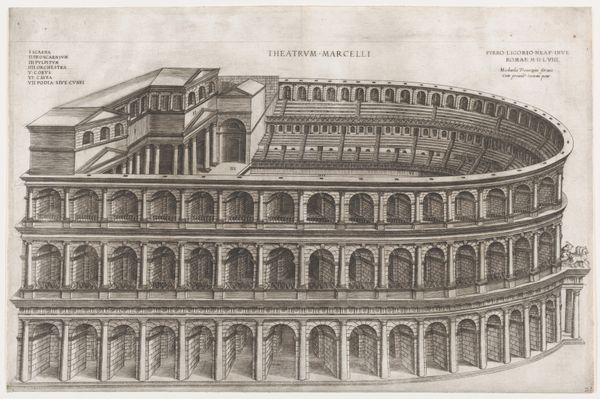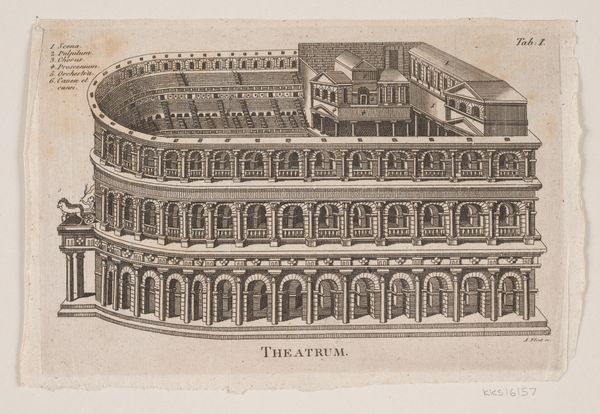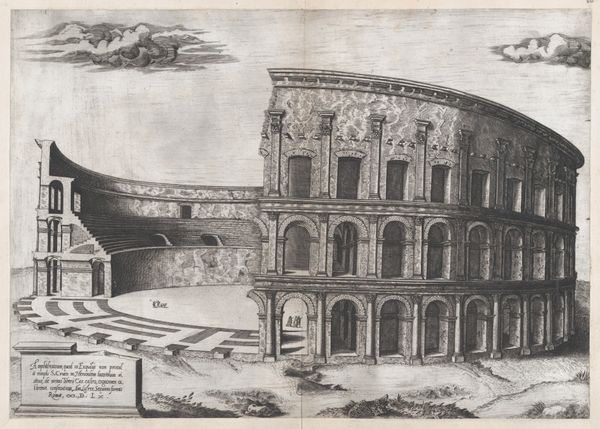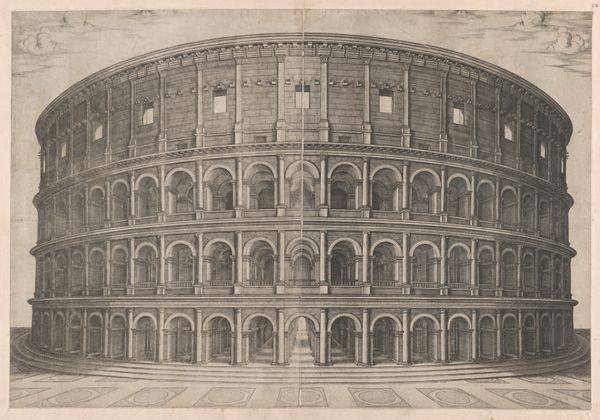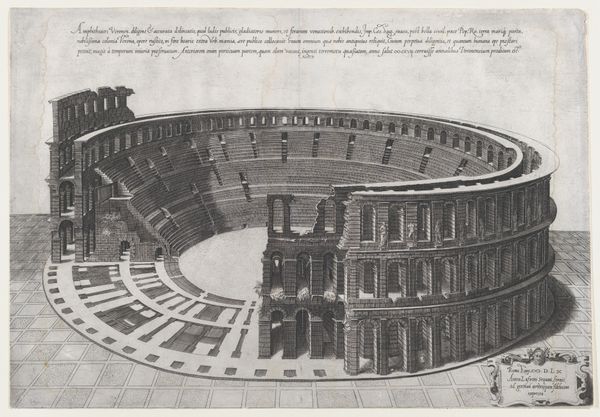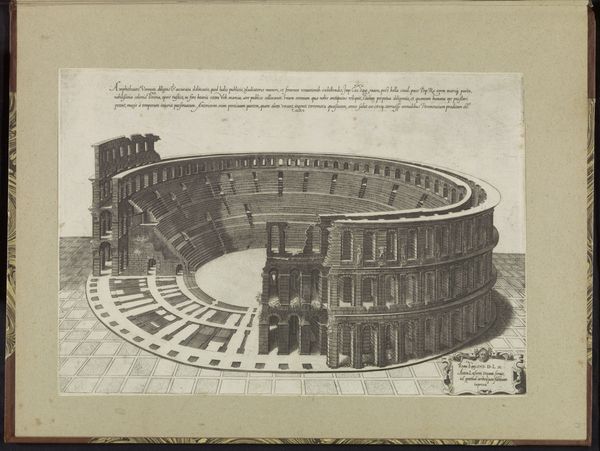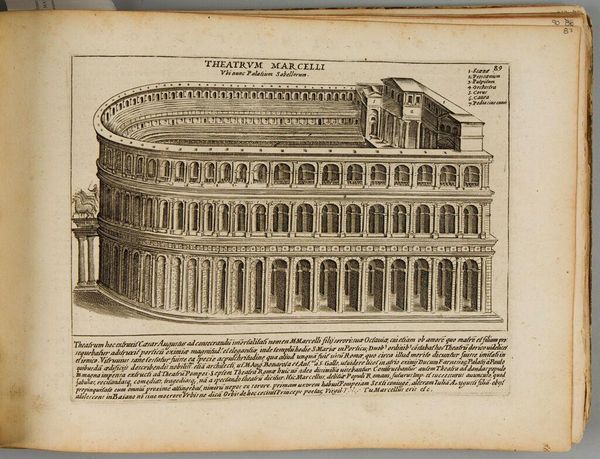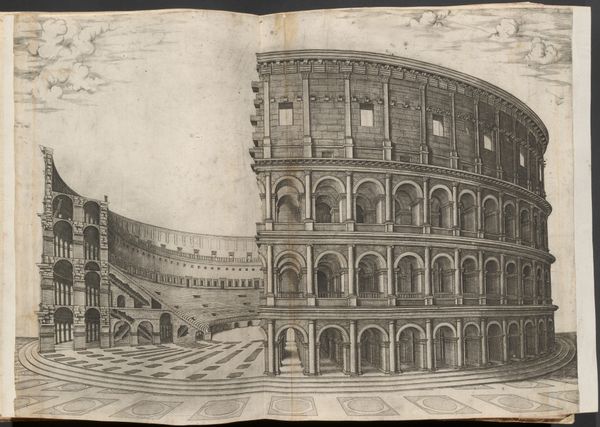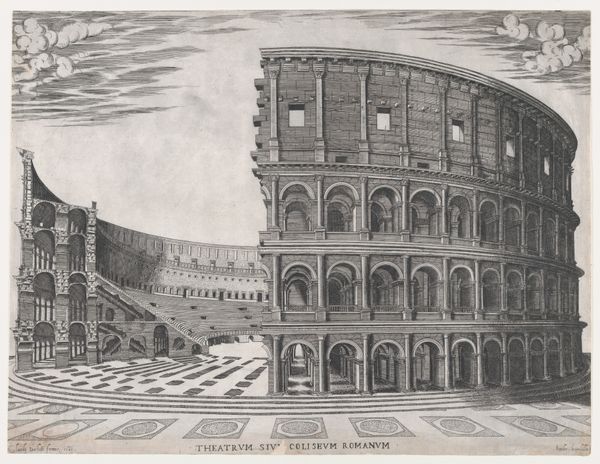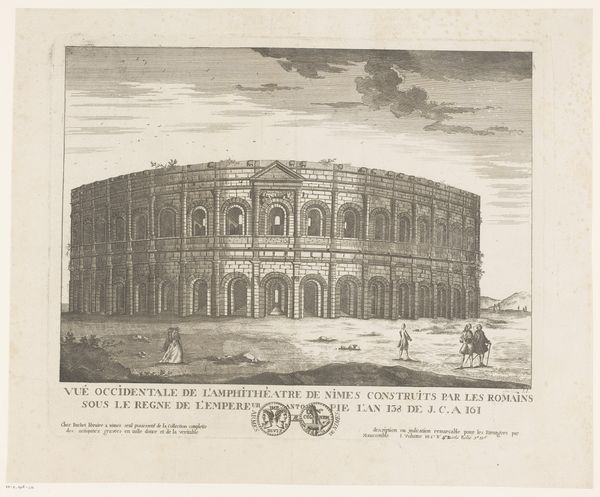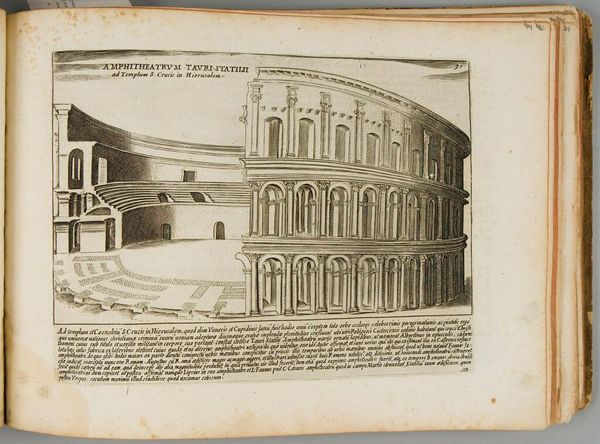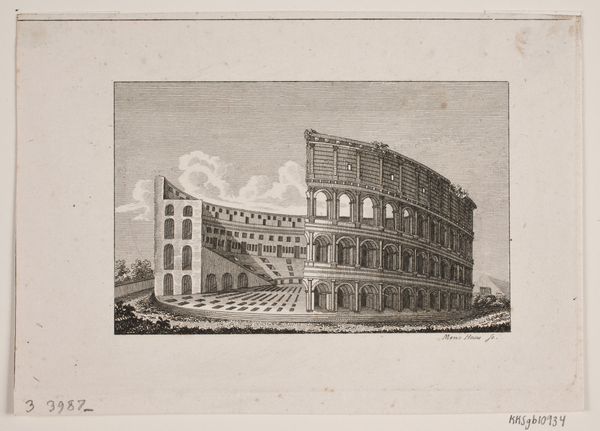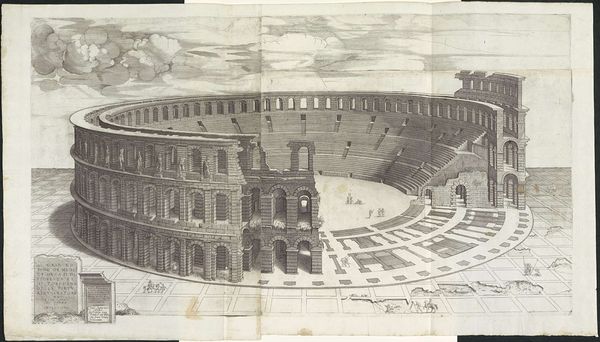
Speculum Romanae Magnificentiae: Theater of Marcellus 1530 - 1580
0:00
0:00
drawing, print, engraving, architecture
#
drawing
# print
#
perspective
#
form
#
11_renaissance
#
ancient-mediterranean
#
line
#
cityscape
#
engraving
#
architecture
Dimensions: sheet: 14 3/16 x 21 1/16 in. (36 x 53.5 cm)
Copyright: Public Domain
Editor: So, this print is "Speculum Romanae Magnificentiae: Theater of Marcellus," made sometime between 1530 and 1580 by an anonymous artist. It's an engraving, showing the theater in precise detail. The overwhelming symmetry almost feels like a kind of ideal, rather than just a record of a real place. What strikes you most about this image? Curator: The precision speaks to the Renaissance desire to capture and understand the grandeur of Rome, but it also evokes the power of memory. This isn't just a building; it's a stage for remembering. Do you notice how the lines almost create a sense of receding time, the present built upon layers of the past? Editor: I do. The different levels create almost separate, historical bands. What about the choice to depict it so rigidly, almost as a mathematical form? Curator: The Roman theater was more than just a place for performance. It symbolized Roman civic identity. This print meticulously reconstructs not just the theater's architecture, but the very idea of Roman power and order. Look at how the lines lead the eye to imagine a structured, shared social experience. Editor: So, the rigidity isn't just aesthetic, it's symbolic of Roman society itself? Curator: Exactly. This image becomes a vessel, holding and transporting a particular vision of Roman virtue and cultural legacy across time. The image continues to convey cultural continuity. This isn't a ruin but a cultural resource. How does seeing it this way change your initial perception of symmetry? Editor: It adds a whole new layer of meaning, it goes beyond form. It speaks of cultural values being expressed. Curator: Precisely. What was recorded wasn't only a theatre; what we see are records of an order.
Comments
No comments
Be the first to comment and join the conversation on the ultimate creative platform.
